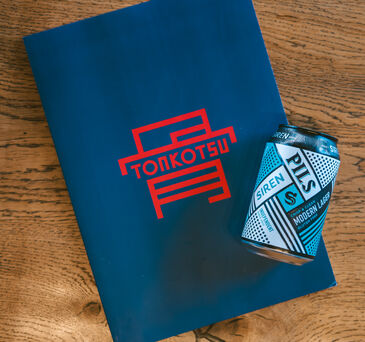
History of the George & Dragon Pub
Visiting the George & Dragon is, we hope, a restful and rewarding experience for all of our patrons. From the ever-changing specials board, to our drinks offerings and outside garden space, there's a lot to enjoy at the G&D.
But how much do you know about the history of the pub itself? Let's take a brief dive into some of what makes this country pub so special and unique.
THE GEORGE AND DRAGON, SWALLOWFIELD
It’s generally thought that The George and Dragon started off as The Church House, owned by the church, a source of income, and that it was nearer the churchyard, though it isn’t known exactly where it was. The book “Swallowfield and its Owners” by Lady Constance Russell, published in 1900, says that older people still referred to The George and Dragon as The Church House in her time, and that the pub moved to its present location around 1850.
The present building is listed, Grade II. The official listing says that it’s a rebuilding, probably from the early 19th century, of a house probably dating from the 17th century.
In its earlier years, the pub is referred to as The George or The George Inn; I’ve found it as The George and Dragon from the 1840s onwards, and very occasionally in the 20th century as The St. George and Dragon.
It’s thought that in its early days, mummers regularly performed their tradition play at the inn: in her book Lady Russell gives the text of the play, which involves St. George, the Dragon, the Turkish Knight, the King of Egypt, the Doctor, and Father Christmas.
The George and Dragon played its part in the social life of the village in many ways, which appear in the local papers over the last 300 years and more. It was a public house in every sense of the word.
In 1814, various pieces of open “commonable” land in Windsor Forest, including some in Swallowfield, were to be enclosed by Act of Parliament. A government commissioner was to appear at the inn, to meet anyone who could claim commoners’ rights, who might be entitled to compensation.
In 1840, when John Rogers was landlord, Sir Henry Russell of Swallowfield Park held his manorial Court Leet, Court Baron and View of Frankpledge here – when his tenants came to pay their rents, presumably to his agent.
Until the law changed in 1893, vestry meetings were held here, where the village constables, overseers of highways and guardians of the poor were chosen annually.
It was a place where coroners and their juries held inquisitions post mortem, when people had died in accidents or otherwise unexpectedly. For instance, in 1866 there was an inquest on James David, a local carpenter who had been driving a horse-drawn van with his wife, mother-in-law and a friend. They hadn’t gone very far when the van overturned and they were all thrown out. He was taken home, unconscious, and died the same evening: the others survived. In 1871 there was an inquest on Frances Pangbourn, the daughter of William Pangbourn who was Steward to Sir Charles Rose of Swallowfield Park. She had suffered a fit and thrown herself down a well. In 1875, James Goodger was reckoned to have died of “decay of nature,” i.e. natural causes. He was 79.
The inn was a calling place for the local carrier, on a route between Kingsclere, Swallowfield, Reading and London. In 1852, when James Rogers was landlord, the carrier was retiring, and anyone interested in taking the business over was to contact Mr. Rogers.
It was also the meeting place of local friendly societies, like the Swallowfield Benefit Club in 1851. The members met at the pub to pay their regular contributions. The money was usually invested in something safe, like a town’s corporation or a railway company, and members could claim benefits if they became ill and unable to work. There was also a pay-out when a member died – many would have felt ashamed if they could only afford a pauper’s funeral when they would have been interred in an unmarked grave along with a lot of other corpses. In the 1880s there was a Good Samaritan Friendly Society doing the same kind of thing. This was before the insurance companies got going.
In the 18th and 19th centuries, many sales were held at The George, of things like timber and underwood, barley, peas and clover. Sometimes, when it came to farm livestock and deadstock (i.e. animals, hay a straw, tools, farm equipment, carts, etc.) the sale might be at the farm, but potential customers could collect a printed catalogue at The George. In 1907 the sale of a jobmaster’s business was held in the yard of the inn. The jobmaster hired out horses and horse-drawn vehicles.
Then some of the landlords had secondary businesses. In 1919 John Hibberd dealt in second-hand cars. In 1932, his son, Francis Hibberd, was fined for driving a motor vehicle without a licence. He followed his father as landlord, and also kept cows, and sold the milk, until his business was taken over by Clifford’s Dairies.
There are mentions of shooting competitions, where the refreshments were provided at The George. For instance in 1771 the prizes were a silver cup, and a pair of silver buckles. Then in 1844, Mr. E. F. Standish of Farley Castle held a shooting competition for the gamekeepers of surrounding estates. 23 took part, and afterwards, they enjoyed “a good substantial dinner with lots of punch and grog” at The George, paid for by Mr. Standish.
Later, in the 1920s and 30s, the Garth Hounds met at The George and Dragon, usually twice a year in the spring and autumn, 1924-1939. Doubtless the landlord would have supplied a stirrup-cup to the fox hunters.
In the 20th century the local papers start reporting on games in the pub itself, especially darts and bar billiards. Both ladies’ and men’s teams are reported on in the 1960s.
For many years in the second half of the 19th century, the landlord provided the “bountiful dinners of old English fare” at the Harvest Home, in a marquee in the Park, laid on by the Russell family. This was in the time of Walter Rose, and later of Mr. E. Withers.
In 1883 Mr. Withers provided the refreshments for the first Swallowfield Garden Show, in Swallowfield Park. In 1899, it was called the Swallowfield Cottage Garden Show. For the Annual Ploughing Match of the Wokingham Agricultural Association in 1892, the landlord, Walter Rose, provided the refreshments at the ground at Arborfield.
The George and Dragon hit the national headlines in 1919. Henry Timms went to the pub to see about buying a second-hand car, when the landlord, John Hibberd, came flying out of the door, with items of crockery being flung after him. Then Mrs. Hibberd, who had been flinging the crockery, followed, with a terrible gash across her throat. An ambulance and the police were called. Mrs. Hibberd was taken to hospital, and recovered; her husband was convicted of attempted murder, and spent some time in prison. After that, the pub was nicknamed Cut-Throat Kate’s.
The Easter Sunday Dog Show and Car Boot Sale at the George and Dragon was advertised in 1988. The proceeds were to go to Guide Dogs for the Blind.
It wasn’t until May 1990 that food was specifically advertised. An advert in several local papers round about said “Evening Meals Now Being Served.” A sign of the changing times!
DISCOVER OUR OTHER STORIES
The Story of Low-Key Loud
Read MoreLed by Emily and Jez in the Siren production team, Low-Key Loud has been a labour of love over the past few months - and a testament to our prolonged support of good causes that are important to our...
August Newsletter
Read MoreJuly saw big beers, bigger collaborations, an ever-busy events season that just won't slow down. Take a look at what we've been up to below, and a little of what's to come - including some upcoming...
Meet the Soundwave Mashups
Read MoreIntroducing our two new Soundwave mashups! We've collaborated with brewing icons Verdant and Pressure Drop on these special releases that blend our classic IPA, Soundwave, with two larger than life...




